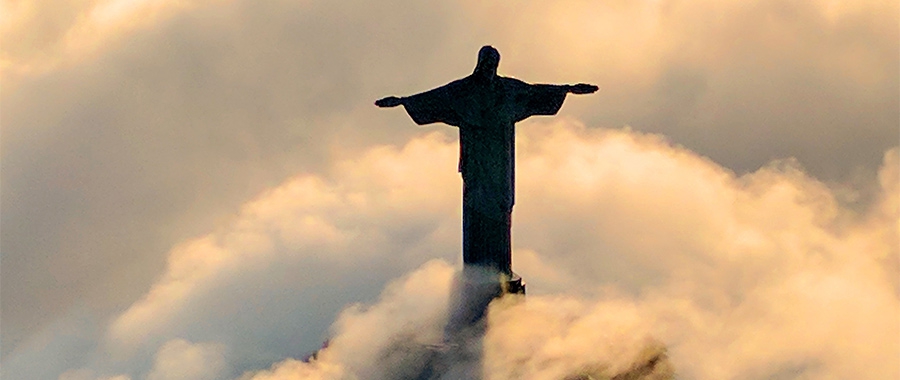The views expressed in our content reflect individual perspectives and do not represent the authoritative views of the Baha'i Faith.
People have waited for the return of Christ or the Day of Judgment for a very long time—which means viewing any claim to fulfill those prophecies with a healthy dose of skepticism.
We have good reason for that skepticism—plenty of cataclysmic predictions, bogus claims and would-be messiahs who have gathered around themselves followers and indulged in sometimes bizarre beliefs and practices. Yet more often than not, nothing much comes from these individuals in the long run.
As a Baha’i, I am quite convinced that this momentous event did occur in the middle of the 19th century.
In fact, I would go so far as to say that Christ’s return is well-nigh obvious to anyone who cares to examine the circumstances, history and character of Baha’u’llah, the Bab and their followers. The event itself was nothing like the spectacular visions of stars falling to the ground and a luminous being descending physically to Earth that some people imagine. These sorts of popular and fantastic images are part of the common understanding of this promised event, a literal, non-metaphorical interpretation of the New Testament.
Far from this fantastical scenario, the events which surround the birth of the Baha’i faith appear understandable—at least on the surface.
It began in 1844 when a 24-year-old merchant in Shiraz, Persia took on the title of the “Bab,” an Arabic word which translates to the “Gate.” He claimed to be the promised one of Shi’ite Islam and said he had come to prepare the way for someone greater, in a manner very similar to how John the Baptist acted relative to Christ. He said his revelation heralded the advent of “He Whom God shall make manifest,” the divine messenger who would fulfill the prophecies of all past Faiths.
Strikingly, the Bab’s brief but tumultuous ministry had multiple parallels with the life of Christ. He gathered many devoted disciples, produced apparent miracles (though the Bab forbade the attribution of miracles to his person), preached against the corrupt clerical establishment and was executed in 1850 by a government that feared the rapid spread of his Faith. Later in 1863 a young Persian nobleman with the title “Baha’u’llah,” which means “the glory of God,” who had espoused the cause of the Bab and suffered exile and imprisonment for it, declared that he was the one foretold by the Bab:
O peoples of the world! The Sun of Truth hath risen to illumine the whole earth, and to spiritualize the community of man. Laudable are the results and the fruits thereof, abundant the holy evidences deriving from this grace. This is mercy unalloyed and purest bounty; it is light for the world and all its peoples; it is harmony and fellowship, and love and solidarity; indeed it is compassion and unity, and the end of foreignness; it is the being at one, in complete dignity and freedom, with all on earth. – Abdu’l-Baha, Selections from the Writings of Abdu’l-Baha, p. 1.
This remarkable story, and the heroic individuals who populate that early history of the Baha’i Faith, embody the great archetypes which no doubt will inhabit human consciousness for the ages—the stuff which creates myths and legends.
The story of the Babi and Baha’i Faiths features heroes like Tahirih, considered the first modern martyr for women’s suffrage; Mulla Husayn, the scholar, searcher, first disciple and finally heroic warrior for the Cause of the Bab; and later Abdu’l-Baha, the eldest son of Baha’u’llah, born on the same night as the Bab’s declaration in 1844, his life embodying the very essence of Christ’s teachings. If for nothing else, their stories are worth telling for the pure human drama and joy they evince. Those remarkable souls seem to be cast in marble, even while they inhabited this mortal plane. A whole generation of Iran’s brightest from all classes were so swept up by the force of the Bab’s and later Baha’u’llah’s revelation that thousands went to their deaths with wiling joy rather than renounce their new faith.
Often, when I discuss all of this with people who have a more fundamentalist bent, their skepticism pivots on the non-fantastical nature of the advent of Baha’u’llah—and on the Baha’i principle of the acceptance of other religious dispensations as part of God’s overall plan. But if one thinks a bit about either of these objections, they fall apart under logical analysis.
First, let us suppose that indeed a luminous being did in fact descend from the heavens claiming to be Christ. If this seemingly miraculous act represents the distinguishing characteristic of the savior, how then would we be sure that he is the true savior, knowing what we know about the possibilities of human technology? In the words of the science fiction author Arthur C. Clarke “Any sufficiently advanced technology is indistinguishable from magic.” Surely the possibility of engineering such a special-effects spectacle by technologically advanced mortals is not out of the question?
If indeed the ability to generate miraculous physical wonders is the metric by which we accept spiritual authority, then shouldn’t we worship scientists instead, since they’re the most accomplished in this respect? If one reads the gospels in this light, it would seem obvious that the central power attributed to Christ and the basis by which his authority is established must be related to the non-physical spiritual attributes of love, kindness and compassion he manifested—not any supposed miracles he caused.
The physical wonders the Bible describes, while perhaps not a-historical, are more importantly understood in terms of their metaphorical content. Again and again spirituality is placed over the showy physicality of the world. It must stand to reason, then, that the performance or appearance of “physical wonders” cannot be used as good evidence for any such claim, nor should it be used to reject a claim.
On the second issue, it would seem clear that if indeed Christ has returned, he would be the final arbitrator of whether or not other religions were also inspired by God. Surely our human judgment on this matter cannot supersede his. For example, when during the first advent Christ broke the Sabbath or appeared to claim divinity, would the denials of those who rejected him on this basis have any merit? After all, those who rejected him and had him crucified did so because his teachings didn’t appear to accord with their understanding of scripture.
If a rational Christian takes Christ’s promise of return seriously, he or she could not possibly have the arrogance to think that they understand God’s scripture better than Him when His messenger returns. First you must release yourself from pre-conceived ideas of how or what he will teach, or you will reject him for exactly the same reasons he was rejected during the first advent. Once freed from these prejudices, if a person reflects on the history and circumstances of the birth of the Baha’i Faith, a better fit to this promise will not be found even if we wait another millennium.
You May Also Like
Comments

















By the vivid expression “like a thief ” Jesus instructs us to expect
a repetition of the way He came the first time. He further
confirms this fact by predicting that people will respond to the
News of His coming the same way ...that they responded to the
News of the coming of Noah. They will be complacent, non-
attentive, negligent, and spiritually asleep.